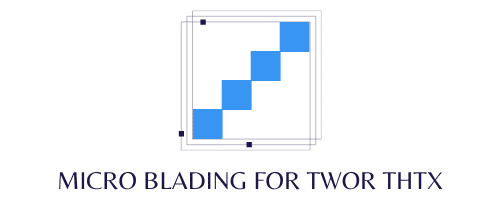What are the best practices for introducing coding curriculum in UK primary schools?

In the digital era, teaching children to code has become a top priority for many educators. It’s not just about preparing kids for future jobs in tech, but also about helping them develop problem-solving skills, improve creativity, and understand the world around them. In the UK, primary schools are being encouraged to integrate coding into their curriculum. But how can this be achieved most effectively? Let’s delve into some best practices for introducing coding in the classroom.
Integrating Coding into Existing Curriculum
When introducing coding, it’s vital not to see it as an isolated subject. Instead, consider how it can be integrated with the existing curriculum. This way, students can see the application of coding in different contexts, and teachers can reinforce the connection between coding and other subjects.
Cela peut vous intéresser : How to develop an app that helps UK citizens recycle effectively?
In Maths, for instance, teaching coding can help children understand concepts such as algorithms, sequences, and patterns. In English, coding can be used to support storytelling – children can program animations or games to bring their stories to life.
Start by aligning coding lessons with the lesson aims of other subjects. For example, if students are learning about shapes in Maths, a coding lesson can involve programming a robot to move in a square, triangle, or circle.
Avez-vous vu cela : Day cruises: boat rental in st barths
Making Coding Hands-On and Interactive
One of the most powerful ways to engage kids in learning is to make it hands-on. Coding shouldn’t be an exception. Use tools and resources that allow children to see the immediate results of their code.
There are numerous coding toys and robots that primary school pupils can program. These tools not only make coding tangible but also introduce children to robotics, further expanding their digital skills.
Coding apps and websites also offer an interactive learning experience. Platforms such as Scratch and Code.org provide a visual programming environment where children can create their own games and animations. They can see their code come to life, fostering a sense of achievement and enthusiasm for learning.
Training Teachers in Coding
A successful coding curriculum depends on the confidence and capabilities of teachers. They are the ones who will guide and inspire students in their coding journey. Thus, it’s crucial that teachers receive proper training.
Consider arranging professional development sessions focused on coding. Teachers don’t need to become programming experts — what’s important is that they understand the basics, the terminology, and how to guide pupils in problem-solving.
Additionally, encourage teachers to explore coding themselves. There are numerous online platforms, like Codecademy and Coursera, that offer coding courses for beginners.
Encouraging Peer-to-Peer Learning
Learning from peers is a powerful tool in the classroom. When children hit a roadblock in their coding project, encourage them to seek help from their classmates before turning to the teacher. This will not only help them find a solution but also foster collaboration and communication skills.
You can also group children with varying coding abilities. Advanced students can help their peers, reinforcing their own understanding and boosting their confidence.
Creating a Positive Learning Environment
Children can find coding challenging, and it’s common for them to make mistakes along the way. It’s crucial to create a learning environment where making mistakes is seen as part of the process, not as a failure.
Encourage children to experiment with their code and to learn from their errors. Show them that every coder, even professionals, go through a process of trial and error. This will help build their resilience and perseverance — key skills in learning to code and in life overall.
Remember, introducing coding in primary schools is not just about producing the next generation of software developers. It’s about equipping children with a new way of thinking and solving problems, fostering their creativity, and preparing them for a world where digital skills are increasingly important. So take the time to plan your coding curriculum, involve your teachers in the process, and make the learning journey enjoyable for your students.
Using Transition Activities to Introduce Coding
The transition from year 6 to secondary school is a significant step in a child’s primary journey. At this stage, children are mature enough to grasp more complex concepts, making it an ideal time to introduce coding. Transition activities can provide a safe and effective way to introduce these new ideas during this potentially chaotic year.
An example of this is to frame coding as a puzzle or game. For instance, teachers could set up a treasure hunt where students have to decipher simple codes to find hidden items. This not only makes coding fun and engaging, but also gives children a hands-on understanding of the problem-solving required in computer science.
Another effective activity could be to design a simple coding project related to a topic the students are already learning about. For instance, if they are studying ancient civilizations, have them design a game or animation that tells a story from that era. Incorporating coding into the broader curriculum can help students see the relevance of these skills in different contexts.
Throughout these transition activities, it’s important to create a supportive and positive environment. Children deserve the best support, particularly during transitions. So, encourage them to experiment, make mistakes, and learn at their own pace.
Remember, the goal of teaching coding at the primary level is not necessarily to create future programmers, but to develop children’s logical thinking, problem-solving skills, and digital literacy.
Establishing a Strong Computing Curriculum and Concluding Thoughts
Introducing coding in primary schools requires careful planning and a robust computing curriculum. A coherent curriculum will map out the progression of coding skills from Key Stage 1 to Key Stage 2, ensuring that students develop a solid foundation in computer science.
The curriculum should align with the national standards and reflect the best primary teaching strategies for coding. It should be flexible enough to accommodate different learning styles and paces, but structured enough to ensure systematic progression.
Additionally, the curriculum should be regularly reviewed and updated to keep up with the rapid changes in technology. This will ensure that students are always learning the most relevant and up-to-date coding skills.
In conclusion, introducing coding in primary schools is a significant and necessary step in preparing children for a digitally-driven future. There are many ways to do this, from integrating coding into existing subjects to making coding interactive, from training teachers to encouraging peer-to-peer learning.
Coding is more than just a technical skill – it’s a new way of thinking and solving problems. And with the right approach, we can ensure that our children not only master the language of the digital age but also grow into creative, critical thinkers who are ready to face the challenges of the future.
